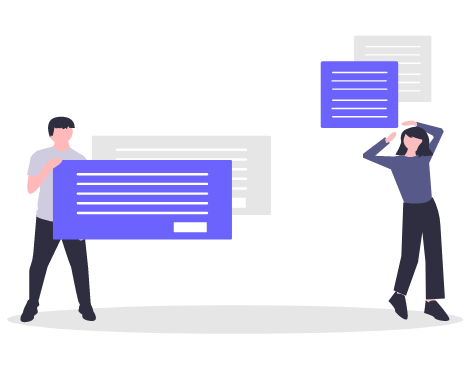To begin with, let’s figure out what handling inbound calls means. It’s when a customer dials a call center number, their call is received, registered, and addressed. Such a flow of calls is crucial for many contact services. After all, when someone calls a company, they hope to get a quick response and have their issue resolved in minimal time. Thus, it’s essential to smartly set up the call reception process and work with applications.
In the article below, we’ve described simple ways to enhance the quality of your hotline, and we’ll tell you how the cloud-based call center Oki-Toki will assist in this task.
How the processing of calls and applications occurs
The processing of inbound calls from customers is when contact-center agents (or a voice assistant robot, but more on that later) receive calls and deal with requests. Usually, several stages occur: first, the PBX receives the number, then it goes to the queue or directly to an available specialist, next, employees converse with the caller. During the dialogue, an agent might use additional options – put the call on hold, add to a conference, as well as send an SMS or Email to the customer. Everything depends on the specific case of the company. The main aspect is the agent’s efficiency, quality of work, as well as a well-adjusted call scheme.
Detailed instructions on how to create an inbound line with Oki-Toki can be read in a separate article.
What are the differences between cloud services and local ones
There are two main types of software for call centers: cloud-based and local. The local ones (server-based) mean that the software is located on the company’s own equipment, which can be quite costly, requiring investments and constant tech support. We also have a server solution, which you can read about on our site.
But cloud-based call centers (for example, Oki-Toki) work on a different model. The developer provides the server part, data and service are “in the cloud,” and to use it, you just need a computer with internet access.
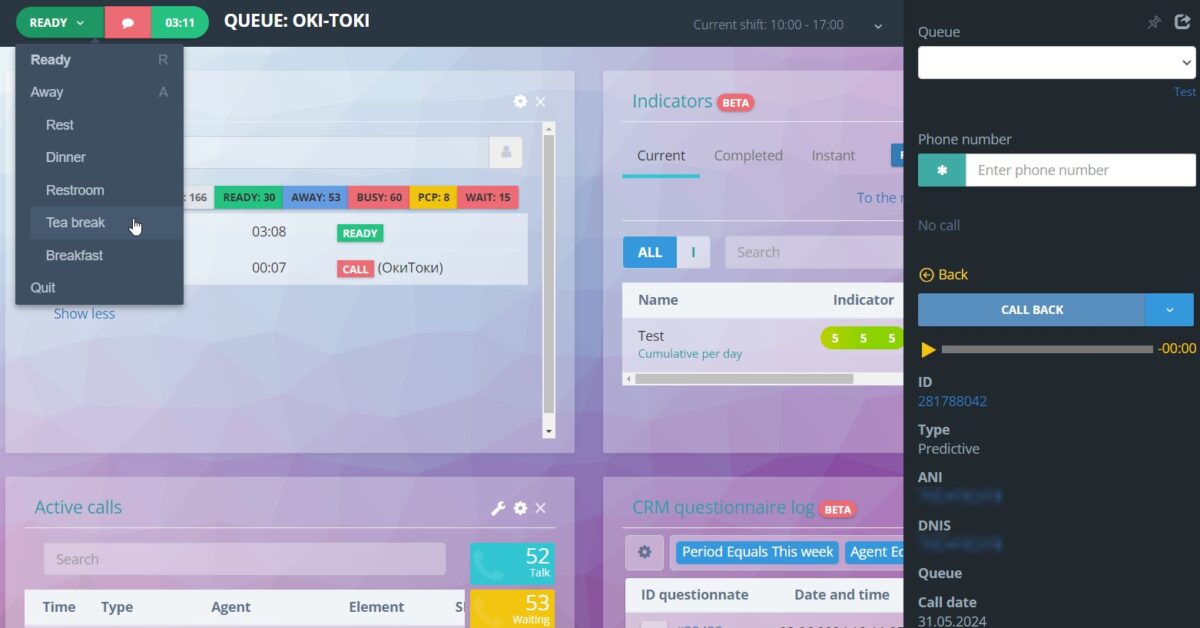
What are the benefits of a cloud-based call center
The cloud software has more pros compared to server-based solutions, let’s mention a few important qualities:
- Availability. Cloud-based call centers work via the internet, so agents can work from any place — be it from home, another location, or on a business trip. This is convenient, especially if you need to organize remote work.
- Savings. Cloud-based call centers don’t require significant investments in equipment. Everything works over the internet, meaning there’s no need to spend money on expensive servers and their maintenance.
- Quick setups. Setting up and launching a cloud-based call center is much easier than deploying a server system. There’s no need for equipment installation and server setups — everything works as soon as you connect to the internet.
- Updates without effort. All updates and improvements occur automatically. You don’t have to worry about downloading and installing the latest software versions, as you would with a server system.
- Monitoring. With a cloud-based call center, it’s easy to monitor performance indicators in real-time, whether it’s the number of accepted calls or wait time. This is much more convenient and will affect the quality of service.
- Integration. The cloud system easily integrates with other platforms, simplifying operator tasks if, for example, applications must be recorded in an external program.
- Scalability. You can quickly adjust settings depending on the case or situation. For instance, during peak loads, it’s easy to add new agents to the line or reduce the intensity of dialer calls.
A cloud-based call center will be a convenient and cost-effective solution for businesses focused on quality service for inbound calls. Savings on equipment, availability, quick setups – all this is guaranteed.
If your customers often hang up without waiting for an agent – read our article with helpful tips.
Inbound calls through Oki-Toki
Oki-Toki has been on the market since 2005 and during this time it has grown from a small system into a full-fledged platform for call centers. To keep up with the times, we evolve and add new functions. We have everything you need to your telephone calls handling:
- Inbound call routing
Calls are automatically directed to a queue, group or the required agent depending on their priorities and workload. We’ve described 10 routing strategies in a separate article. - Call script
It’s needed to indicate where the inbound request will go. That is, it’s creating a scheme by which the call will proceed when the customer reaches the line. For instance, you can specify schedule checking, place an IVR with distribution, redirection, queue holding music, agents, etc. - Interactive Voice Response – IVR
IVR is perfect for allowing customers to choose the required department or direction on their own using button presses (or voice commands).
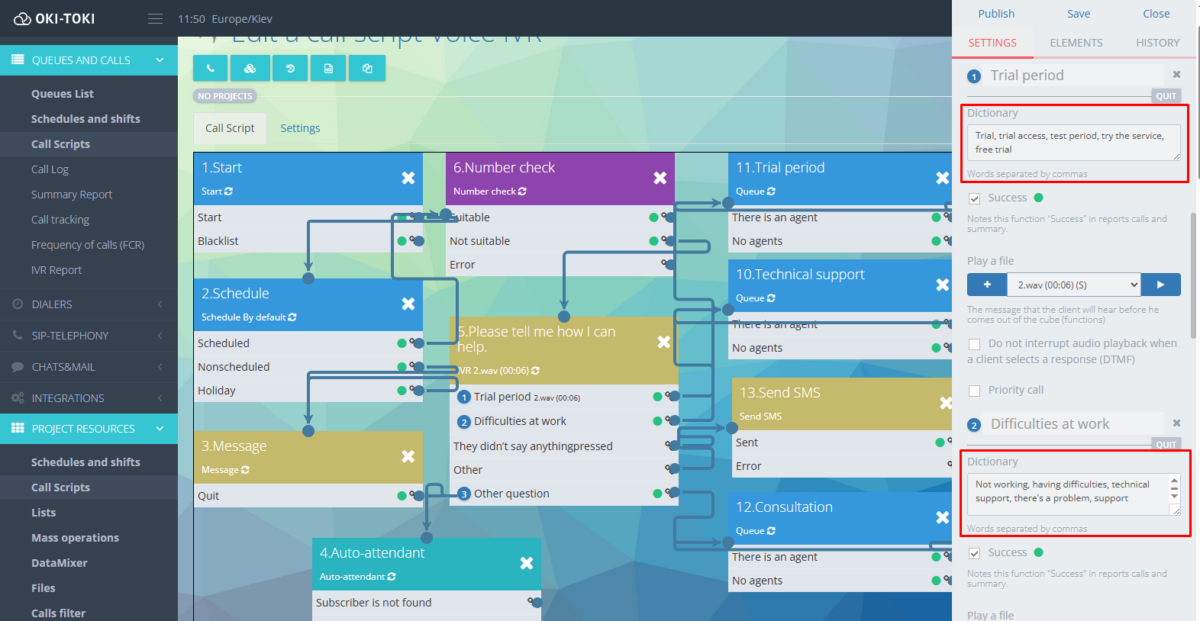
- Queue
Queue in Oki-Toki is a way to set up the line for inbound and outgoing calls. With a vast number of functions, you can make everything as convenient for you as possible: connect the blacklist, adjust the transcript, file name on download, priorities, time zone, CRM questionnaire. - Schedule
You can configure which hours and days agents are available for inbound inquiries, and when not — the system will automatically direct the customer according to the script. - CRM questionnaire
This is a ready algorithm for communicating with customers — scripts. The agent will always know what and when to say. It also shows information about the customer: communication history, order data, and other details. - Webhook
Integration of Oki-Toki with other services for data exchange. For example, you can create a webhook if an agent did not accept an inbound call – information will be transferred, for example, to Telegram. Or set up an action if the same customer calls the line multiple times. - KPI
Norms and requirements for monitoring key performance indicators of agents, to understand who performs better and who violates the rules. - Transcript
All calls can be recorded and transcribed. In Oki-Toki, there is a one-way (free, converting only the agent’s dialogue into text) or two-way, and there’s also a choice of different languages and speech analytics.
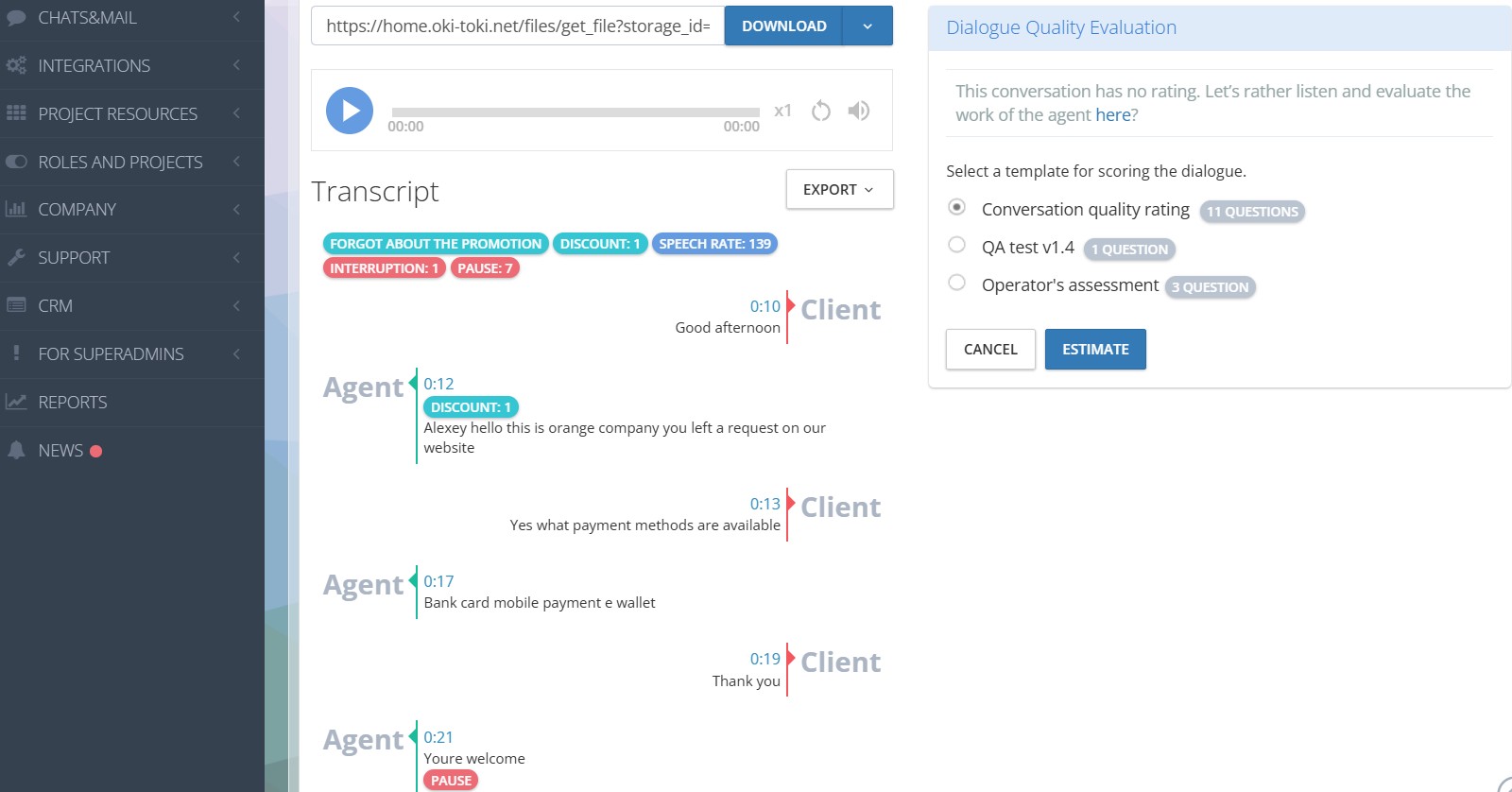
- Data Export
All report data can be easily exported in several formats (HTML, CSV Excel, CSV Google Sheets). Conversation recordings can be downloaded or uploaded to Google Drive. - VIP
You can create a VIP numbers list to prioritize important clients for directing their call to an agent in a priority order. - Infographics
Charts, widgets, and diagrams for assessing the situation without viewing reports. For example, the “Queue Activity” widget will show the number of inbound calls, waiting duration, etc.
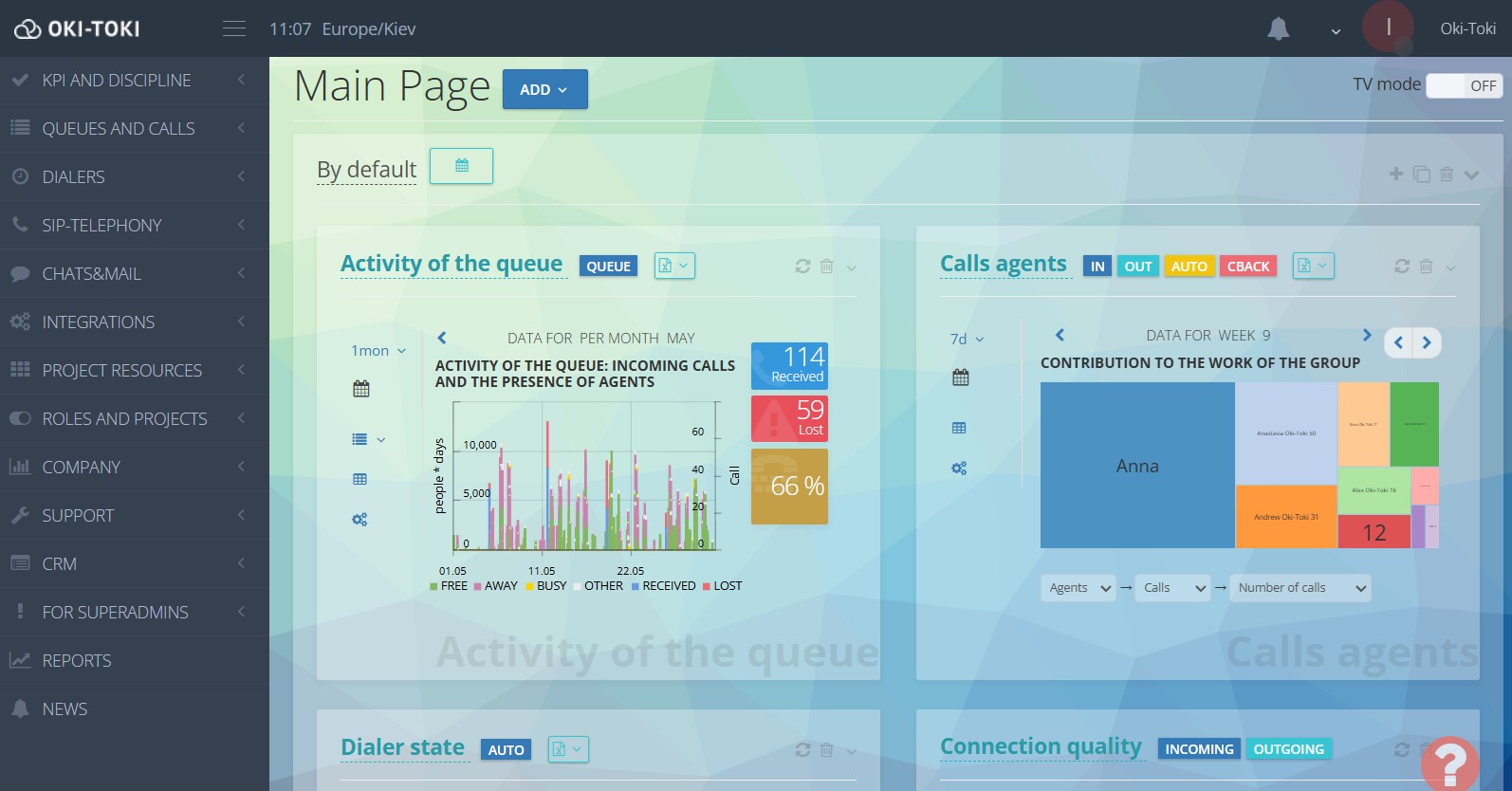
- Callback
A tool for handling missed calls. If a client didn’t get through to the hotline, their number is automatically added to the dialer callback for a subsequent dial-out. Read more about Callback in a separate article. - Integration with CRM
Integration with many CRM systems, for example, “Kommo CRM”, “LeadVertex”, “Zoho CRM” and others. - Auto-agent
Robot will answer calls instead of a live agent, giving the customer information or simply redirecting them to the appropriate manager. - Chats
Are used for answering inbound applications in the form of messages. Oki-toki Chats are suitable for processing customer messages in social networks, e-mail letters, on websites, and various messengers (WhatsApp, Telegram, Viber, Skype).
Reports and analytics
The cloud service Oki-Toki instantly generates reports in real-time with all the important indicators for supervisors and managers. This way, you can track the wait time for a free agent, missed calls (accidentally or deliberately), agent performance ratings, and much more.
Oki-Toki has more than 30 free reports that will easily help you navigate through indicators, agents’ work, financial expenses, etc. You can read about all of this in detail in the article “How to compile reports in a call center”.
Here are a few Oki-Toki reports that will be useful when analyzing inbound calls:
- “Call Journal” – a detailed report on inbound, outgoing calls, and dialer calls for a specified period. It contains everything necessary: phone numbers, agent names, SIP responses, wait and talk time. Also, detailed information about script functions, providers (SIP-gateways), as well as call recording, transcript, etc.
- “FCR Report” – focuses on the number of call-inquiries solved on the first attempt. Useful for call centers tracking the “First Call Resolution” indicator.

- “Summary Report” – general data on calls: their number, wait/talk duration with data grouping by agents, queues, outcomes, and other important parameters.
- “Inbound Statistics” – summarized data on inbound calls, where columns will show the total duration (DUR), average (ACD), and the percentage of successful calls (ASR).
- “Call tracking” – statistics on unique subscriber numbers. That is, this report keeps an account of each new client, attempts to reach the line, wait/talk duration for inbound inquiries.
- “Reports” – instant reports for managers and clients, which regularly arrive via email.
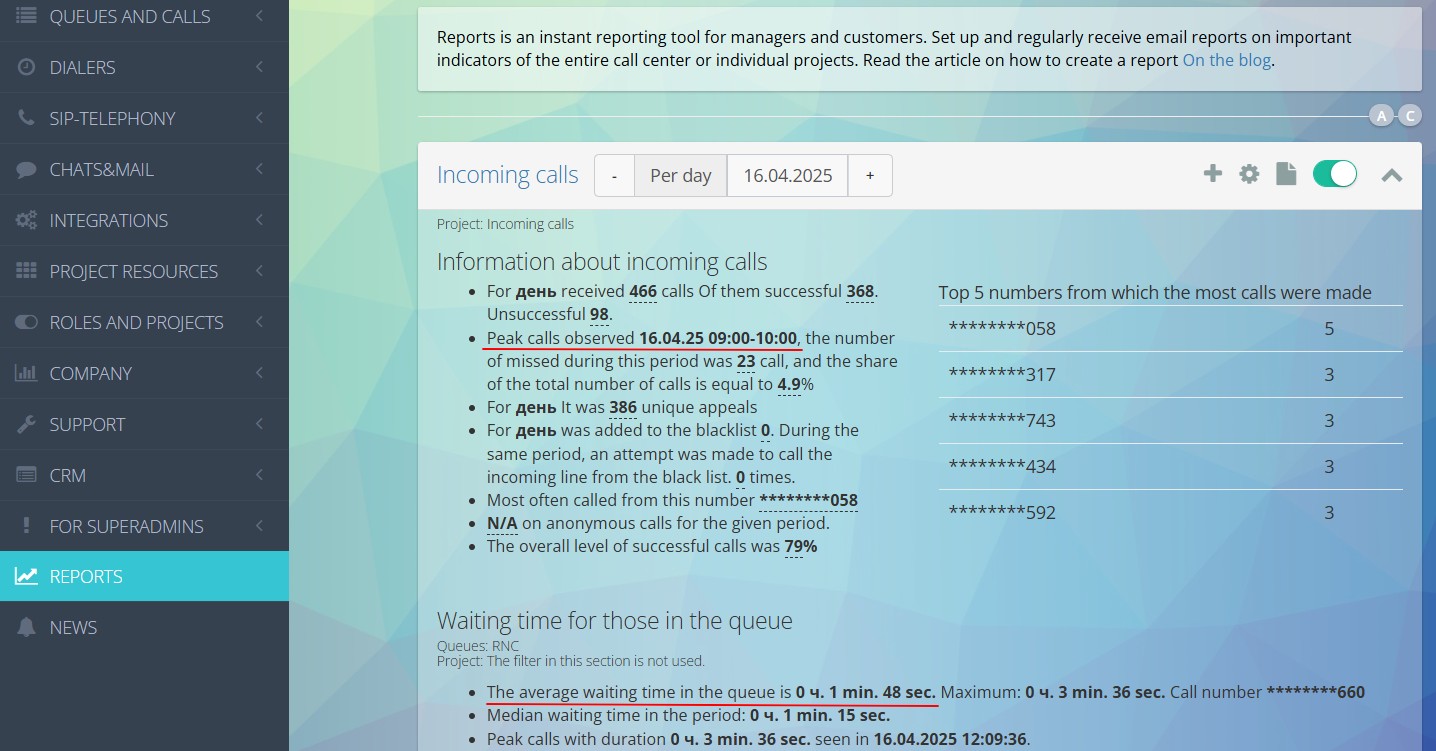
These reports will help you understand how your agents work on the inbound line, whether business processes are correctly set up, as well as quickly notice problems and promptly eliminate them. For instance, adjusting the number of agents, changing texts for voice assistants, dialer scripts, or other settings.
The hotline is more than just receiving calls. It’s a whole process that must be organized at the highest level. Cloud-based call centers offer many excellent opportunities for improving communication with customers.
Availability, flexibility, scalability, automation, and analytics — all these will complement the quality of your call center and increase customer loyalty. With Oki-Toki, you will easily set up all cases, manage all processes, and be confident that your customers will receive the best service.


